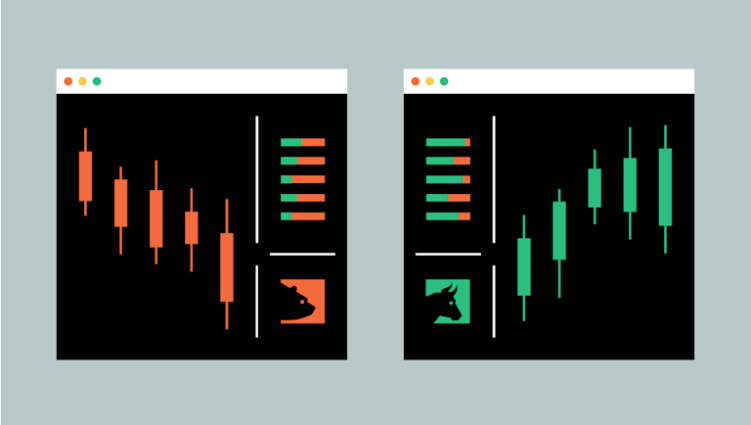
Definition
A market experiencing sustained and/or substantial growth is called a bull market. A market experiencing sustained and/or substantial decline is called a bear market. Each comes with its own opportunities and pitfalls.
Whether you're researching cryptocurrencies, stocks, real estate, or any other asset, you'll frequently encounter two ways to describe market conditions: bull or bear markets. In simple terms, a bull market is a rising market, while a bear market is a declining one. Because markets often fluctuate daily (or even moment-to-moment), these terms are typically applied to:
-
Longer periods of predominantly upward or downward movement
-
Significant fluctuations (20% is the widely accepted threshold)
So, what is a bull market?
A bull market (also called a bull run) is a period where most investors are buying, demand outweighs supply, market confidence is high, and prices are rising. If you see prices in a given market rising rapidly, it may indicate that most investors are optimistic or "bullish" about further price increases, which could signal the start of a bull market.
Investors who believe prices will rise over time are called "bulls." As investor confidence grows, a positive feedback loop emerges, often attracting more investment and causing prices to continue rising.
Since the price of a given cryptocurrency is heavily influenced by public confidence in the asset, some investors use strategies to gauge optimism in a given market (a metric known as "market sentiment").
What marks the end of a bull market?
Even during a bull market, there will be fluctuations, dips, and corrections. It's easy to mistake a short-term downward trend for the end of a bull market. Therefore, it's important to consider any potential signs of a trend reversal from a broader perspective, observing price movements over longer timeframes. (Short-term investors often talk about "buying the dip.")
History shows that bull markets don't last forever. At some point, investor confidence will begin to decline, which can be triggered by anything—bad news like unfavorable legislation or unforeseen events like the COVID-19 pandemic. A sharp price drop may trigger a bear market as more investors believe prices will continue falling, leading to sell-offs to prevent further losses and creating a downward spiral.
What is a bear market?
A bear market is a period where supply exceeds demand, confidence is low, and prices are falling. Pessimistic investors who believe prices will continue to decline call it a "bear market." Bear markets can be challenging to trade in, especially for inexperienced traders.
Predicting when a bear market will end or hit bottom is notoriously difficult because recoveries are often slow and unpredictable, influenced by many external factors like economic growth, investor psychology, and international news or events.
But they can also present opportunities. After all, if your investment strategy is long-term, buying during a bear market can pay off when the cycle reverses. Short-term investors can also look for temporary price increases or corrections. More experienced investors may employ strategies like short selling—a way to bet on an asset's price decline. Another strategy many cryptocurrency investors use is dollar-cost averaging, where a fixed amount (e.g., $50) is invested weekly or monthly, regardless of whether the asset is rising or falling. This spreads out risk and allows you to invest in both bull and bear markets.
Where do the terms "bull" and "bear" markets come from?
Like many financial terms, their origins are unclear. But most believe they stem from each animal's attacking style: bulls thrust upward with their horns, while bears swipe downward with their paws. Of course, there's a long history of theories and evidence about these terms' origins. If you're curious, Merriam-Webster's explanation is a good starting point.
















